Data Replication to Redshift
Replicate SQL Server data to Redshift
Why using BryteFlow to get your SQL Server data to Redshift works.
If you have to migrate SQL Server data to Amazon Redshift, you may be pondering as to which SQL Server replication tool to use. Even as we speak, there are a lot of automated data replication tools out there that claim to ETL your SQL Server data to Amazon Redshift in super fast. Sounds good? But here are some points you may have overlooked.
Learn about BryteFlow for SQL Server
- BryteFlow replicates data in real-time to the destination with zero impact, using SQL Server Change Data Capture or SQL Server Change Tracking or a combination of both.
- Optimised for Redshift, dist keys and sort keys are created automatically.
- No coding needed, automated interface creates exact replica or SCD type2 history on Redshift.
- Manage large volumes easily with automated partitioning mechanisms for high speed.
- S3 and Redshift can be loaded in parallel – saves time. Create an S3 Data Lake in Minutes
SQL Server CDC (Change Data Capture) for real-time SQL Server replication
SQL Server vs Postgres – A Step-by-Step Migration Journey
SQL Server CT (Change Tracking)
Real-time, codeless, automated SQL Server data replication to Redshift

Can your replication tool replicate really, really large volumes of SQL Server data to your Amazon Redshift database fast?
When your data tables are true Godzillas, including SQL Server data, most data replication software roll over and die. Not BryteFlow. It tackles terabytes of data for SQL Server replication head-on. BryteFlow XL Ingest has been specially created to replicate huge SQL data to Amazon Redshift at super-fast speeds.
Secrets to Fast Bulk Loading of Data to Cloud Data Warehouses
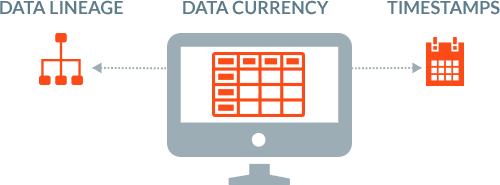
Access Operational Metadata out of the box
BryteFlow keeps operational metadata out of the box of all the extraction and load processes. This can be saved on Aurora if required. The metadata includes currency of data and data lineage. Currency of data shows the status of the data whether it is active, archived, or purged. Data lineage represents the history of the migrated data and transformation applied on it.
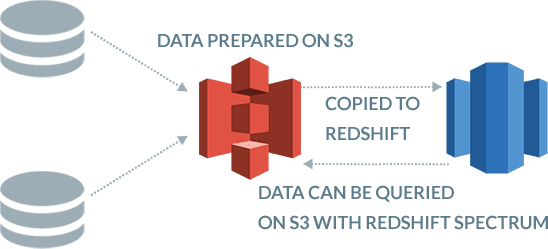
Prepare data on Amazon S3 and copy to Amazon Redshift or use Redshift Spectrum to query data on Amazon S3
BryteFlow provides the option of preparing data on S3 and to copy it to Redshift for complex querying. Or you can use Redshift Spectrum to query the data on S3 without actually loading it onto Redshift. This distributes the data processing load over S3 and Redshift saving hugely on processing and storage cost and time.

How much time do your Database Administrators need to spend on managing the replication?
You need to work out how much time your DBAs will need to spend on the solution, in managing backups, managing dependencies until the changes have been processed, in configuring full backups and then work out the true Total Cost of Ownership (TCO) of the solution. The replication user in most of these replication scenarios needs to have the highest sysadmin privileges.
With BryteFlow, it is “set and forget”. There is no involvement from the DBAs required on a continual basis, hence the TCO is much lower. Further, you do not need sysadmin privileges for the replication user.
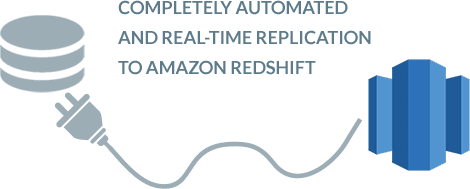
Are you sure SQL Server replication to Redshift and transformation are completely automated?
This is a big one. Most SQL Server data tools will set up connectors and pipelines to stream your SQL Server data to Redshift but there is usually coding involved at some point for e.g. to merge data for basic SQL Server CDC. With BryteFlow you never face any of those annoyances. SQL Server data replication, data merges, SCD Type2 history, data transformation and data reconciliation are all automated and self-service with a point and click interface that ordinary business users can use with ease.

Is your data from SQL Server to Amazon Redshift monitored for data completeness from start to finish?
BryteFlow provides end-to-end monitoring of data. Reliability is our strong focus as the success of the analytics projects depends on this reliability. Unlike other software which set up connectors and pipelines to SQL Server source applications and stream your data without checking the data accuracy or completeness, BryteFlow makes it a point to track your data. For e.g. if you are replicating SQL Server data to Redshift at 2pm on Thursday, Nov. 2019, all the changes that happened till that point will be replicated to the Redshift database, latest change last so the data will be replicated with all inserts, deletes and changes present at source at that point in time.
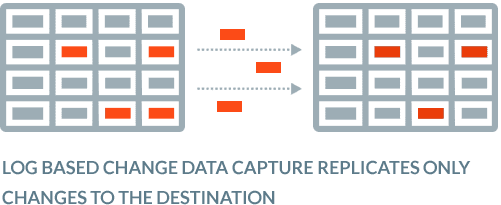
Does your data integration software use time-consuming ETL or efficient SQL Server CDC to replicate changes?
Very often software depends on a full refresh to update destination data with changes at source. This is time consuming and affects source systems negatively, impacting productivity and performance. BryteFlow uses SQL Server CDC to Redshift or SQL Server Change Tracking which is zero impact and uses database transaction logs to query SQL Server data at source and copies only the changes into the Amazon Redshift database. The data in the Redshift data warehouse is updated in real-time or at a frequency of your choice. Log based SQL Server CDC is absolutely the fastest, most efficient way to replicate your SQL Server data to Amazon Redshift.

Does your data maintain Referential Integrity?
With BryteFlow you can maintain the referential integrity of your data when replicating SQL Server data to AWS Redshift. What does this mean? Simply put, it means when there are changes in the SQL Server source and when those changes are replicated to the destination (Redshift) you can put your finger exactly on the date, the time and the values that changed at the columnar level.

Is your data continually reconciled in the Redshift cloud data warehouse?
With BryteFlow, data in the Redshift cloud data warehouse is validated against data in the SQL Server replication database continually or you can choose a frequency for this to happen. It performs point-in-time data completeness checks for complete datasets including type-2. It compares row counts and columns checksum in the SQL Server replication database and Redshift data at a very granular level.Very few data integration software provide this feature.

Do you have the option to archive data while preserving SCD Type 2 history?
BryteFlow does. It provides time-stamped data and the versioning feature allows you to retrieve data from any point on the timeline. This versioning feature is a ‘must have’ for historical and predictive trend analysis.

Can your data get automatic catch-up from network dropout?
If there is a power outage or network failure will you need to start the SQL Server data replication to Redshift process over again? Yes, with most software but not with BryteFlow. You can simply pick up where you left off – automatically.

Can your SQL Server data be merged with data from other sources?
With BryteFlow you can merge any kind of data from multiple sources with your data from SQL Server for Analytics or Machine Learning.
More on BryteFlow’s Data Integration for Redshift

About Microsoft SQL Server
Microsoft SQL Server is a software that is a relational database management system owned by Microsoft. It’s primary objective is to store data and then retrieve it when other applications request it. It supports a huge range of applications including transaction processing, analytics and business intelligence. The SQL Server is a database server that implements SQL (Structured Query Language) and there are many versions of SQL Server, engineered for different workloads and demands.
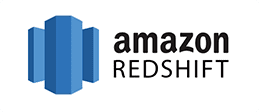
About Amazon Redshift
Amazon Redshift is the fully managed , petabyte scale cloud data warehouse of AWS. Amazon Redshift is characterized by its super fast speed in executing queries against large datasets aided by its Massively Parallel Processing and columnar database. Redshift is comprised of nodes (computing resources) that are organized in clusters. Each Redshift cluster has its own processing engine and at least one database. On Redshift, processing power can be scaled up immediately by adding more nodes to your cluster or even spinning up more clusters.


